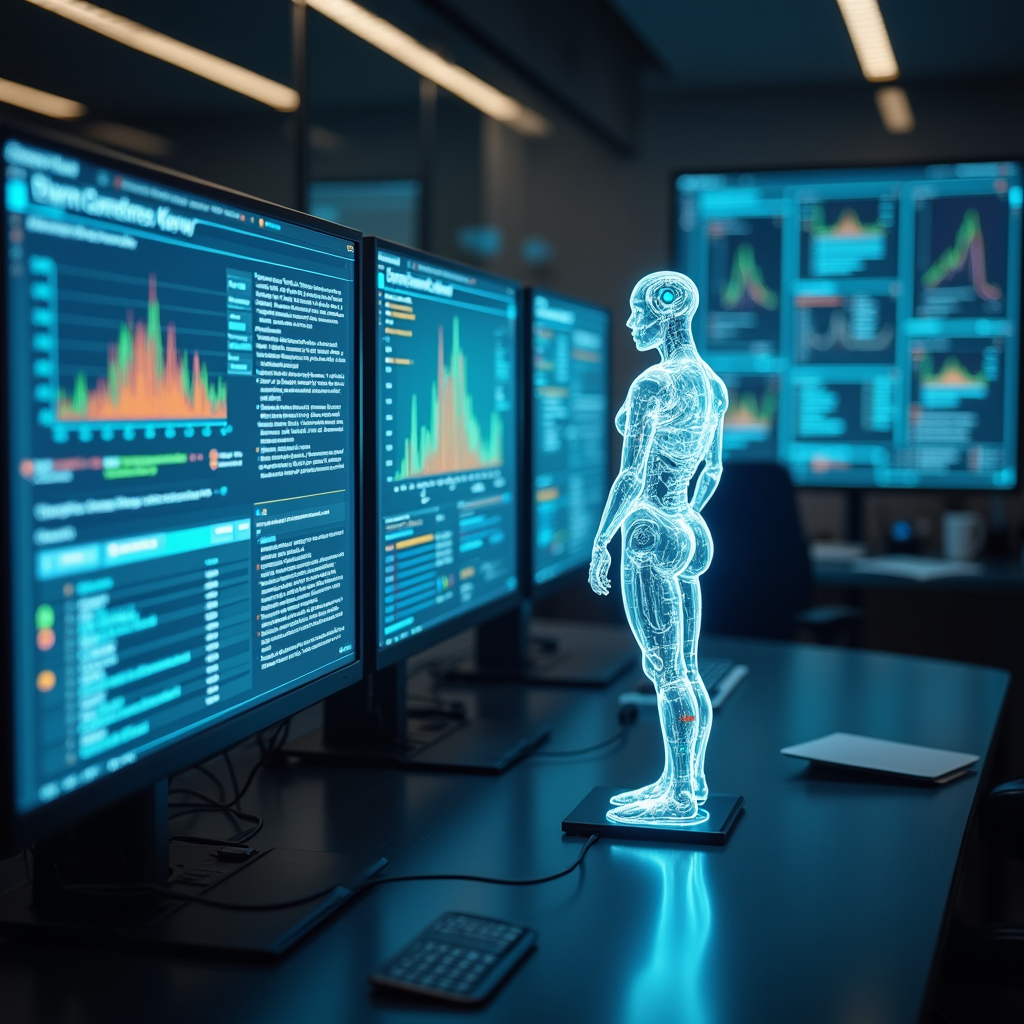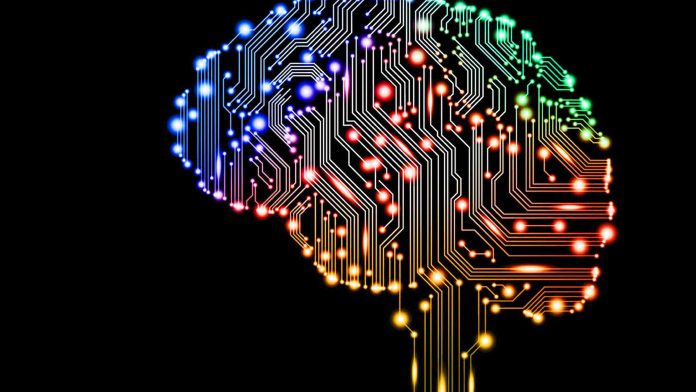This article has been written by Polu Puja Pavitra pursuing a Remote freelancing and profile building program from Skill Arbitrage.
This article has been edited and published by Shashwat Kaushik.
Table of Contents
What is AI
By the term itself, we can tell that using artificial means like computer systems or machines to think like humans to perform day-to-day tasks, analyse problems, make decisions, etc. To make it easier to understand, some of the examples of AI that we use every day are taxi booking apps, chatbots, streaming apps, image recognition through Google Lens, navigation and travel, and voice assistants like Apple’s Siri and Alexa, which act as personal assistants, allowing us to make calls, send texts, etc. with one instruction given by you. These examples show that AI has become a part of our lives, similar to smartphones and the internet. This trend is repeating in the case of business as well.
According to the survey conducted by TCS, 86% of senior business leaders have deployed AI to enhance revenue globally, while in India, 74% of enterprises are working with AI (IBM Global AI Adoption Index 2023). Some reasons for adopting AI are advanced decision-making, reduced response time (2.5 hours/day), cut cost (28%), improved operational efficiency and productivity, enhanced customer-related services, increased productivity, and many more.
| Customer relationships | 64% |
| Increase productivity | 64% |
| Increase sales | 60% |
| Save cost | 59% |
| Reduce respond time | 53% |
| Reduce the risk of errors | 48% |
| Enhance decision making | 44% |
| Streamline | 42% |
Overview of how businesses are using AI for efficiency in different sectors
- Customer services
- Marketing
- Sales
- IT operations
- Fraud detection
- Legal department
- Accounting
AI in customer-related services
AI tools such as chatbots are revolutionising customer service by offering a wide range of capabilities and benefits. They go beyond simple tasks like password generation to handle complex queries and provide personalised assistance.
One key area where chatbots excel is customer feedback. They can collect feedback in real-time, analyse customer sentiment, and identify pain points. This information can then be used to improve products, services, and customer experiences.
Chatbots are also adept at recommending products based on customer preferences and demographics. By analysing past purchases, browsing history, and other data, chatbots can make personalised recommendations that increase the chances of a sale. Additionally, they can provide customised offers and discounts, further enhancing the customer experience.
Another significant advantage of chatbots is their ability to analyse customer behaviour. They can track customer interactions, identify patterns, and predict future needs. This information can be used to develop targeted marketing campaigns, provide proactive support, and optimise the overall customer journey.
Chatbots are also known for their quick response times. They can handle multiple queries simultaneously, ensuring that customers receive immediate assistance. This can significantly reduce wait times and improve customer satisfaction.
Moreover, chatbots are available 24/7, providing round-the-clock support. Customers can interact with chatbots at any time, regardless of the time zone or day of the week. This level of accessibility fosters a sense of trust and convenience, enhancing customer loyalty.
The success of chatbots in customer service is evident in the impressive statistics. According to a report, Tidio’s AI-powered chatbot, LYRO, resolves 70% of customer requests. Furthermore, 80% of customers have a positive experience interacting with AI.
Several notable companies have incorporated chatbots into their customer service strategies. For example, HubSpot, Impulse Creative, and Apple have all successfully implemented chatbots to enhance customer engagement and satisfaction.
How AI is used for customer services
- Improve productivity: AI-powered chatbots enable customers to answer basic queries, eliminating time-consuming repetitive tasks that save lots of time and help invest in more complex tasks.
- Proactive recommendations: AI helps in giving customised recommendations based on the data available, customer preferences, and search patterns.
- Give a quick response around the clock.
- Keeps the customer updated through emails or posts.
- Customer insights: The customer service team can use the data analysed by the system based on the customer preferences, purchases, search history, and every piece of data to gain insights on the market for improving the product or services and plan relevant marketing strategies.

AI in marketing
According to a report by HubSpot, the use of artificial intelligence (AI) and automation has revolutionised the way sales and marketing teams operate. These technologies have brought about significant time savings, allowing teams to focus on more strategic and creative tasks.
The report highlights that the sales team can save up to 2 hours per day by deploying AI and automation solutions. These solutions streamline repetitive tasks such as data entry, lead qualification, and scheduling appointments. By automating these processes, sales representatives can dedicate more time to building relationships with potential customers and closing deals. These tools assist marketers with tasks such as content creation, email marketing, and social media management. This allows marketing professionals to focus on developing innovative campaigns, analyzing customer data, and refining their strategies.
The report also indicates that 63% of marketanalysinging teams use AI for administrative tasks. AI-powered solutions can handle tasks such as scheduling meetings, managing calendars, and responding to routine inquiries. This frees up marketers to engage in more value-added activities, such as market research, brand building, and customer engagement.
The integration of AI and automation in sales and marketing functions has not only enhanced efficiency but also improved overall productivity. By automating repetitive tasks, teams can allocate more time and resources to strategic initiatives, leading to increased innovation, better decision-making, and ultimately, improved business outcomes.
How the marketing team uses AI
- Market research: While traditional market research involves conducting surveys, one-on-one interviews, and manual feedback, which is time-consuming, AI simplifies this task by providing data-driven insights into strategic decision-making. Some market research tools are SEMrush Market Explorer, Poll the People, AI Persona Builder, etc.
- Data analysis: Predictive analytics foresees market trends, customer demands, and preferences. With the help of this data, the marketing team can optimise the resource efficiently and prevent potential risks.
- Content creation: AI-powered content creation helps get unique digital marketing ideas for product descriptions, social media posts, audio, video, and images. Some AI tools available for content generation are AI Writer, Gemini, Claude, Chat GPT, Chatsonic, etc. Craiyon, DALL-E, and Midjourney for image generation.
- Media buying: The first step in marketing a product involves creating awareness among the target audience. Media buying involves purchasing a platform like television, radio, or social media to showcase the product. AI tools simplify this by real-time bidding for space on websites by analysing customer patterns and preferences and optimising media buying strategies for maximum ROI.
AI marketing tools: AI-powered Pattern89 is the marketing tool for Instagram, Facebook, and Google Ads that predicts the best ways to market the product for each penny spent. It has special features like ad placements, an ad assembler, an ad extender, etc. Jasper uploads business knowledge, creates campaign assets, optimises content to rank on page 1 in SEO mode, matches your brand voice and style guide, and has additional features like Chrome extension and privacy. Semrush helps grow organic traffic with SEO tools, competitor research, PPC and social media marketing, content marketing, and tracking of SERP positions.
AI in sales
According to HubSpot, out of the 648 sales professionals and 300 business leaders surveyed, 74% are using AI and automation, and 31% are using generative AI for one or the other work in sales. They are used for different tasks like automating manual work (35%), data-driven insights (34%), writing sales content (31%), analysing sales calls (28%), lead generation (26%), and qualifying leads (25%).
- Customised sales messages and responses based on purchase patterns.
- Prioritise leads in the sales pipeline.
- Customer insights from the CRM system, email interaction, and support tickets.
- Forecast market trends based on seasons and predict future sales for better resource allocation.
- Optimise pricing based on demand and competition.
- Competitive analysis to stay updated in the market.
- Continuous improvement from every interaction history.
AI tools like Crystal and Humantic AI provide prospect insights for better sales messaging. Zoominfo SalesOS- intelligent software that provides a vast and updated database and data enrichment services. LinkedIn sales navigator offers lead discovery tools. Apollo.io for accurate real-time data, CRM systems, and automation tools for marketing. Cognism– prospects and lead generation. Instantly.ai– reach prospects’ inboxes with their deliverability network, optimise with campaign analytics, instantly sales accelerator.
AI in the IT sector
According to the IBM Global AI Adoption Index report, IT process automation, security, and threat detection are the popular applications of AI; 42% of IT professionals have already deployed AI. These tools are used for various services like software development, infrastructure management, AIops, and quality assurance.
Software development: AI helps automate software programming, increasing efficiency by 24-hour software testing, keeping updates on software systems, and improving security.

Ex: Amazon Code Whisperer, Cody AI, Tabnine, Mutable AI, etc.
Quality assurance: when software is developed, it is to be tested for quality and generate test data. Manual testing takes almost one-third of the testing cycle. With the help of AI-powered tools, we can automate testing operations without human errors, supervise API testing, and determine the type of method for the test script. This eliminates repetitive tasks, enhancing efficiency and cost savings.
Ex: Applitools, Test Sigma, Sauce Labs, Testcraft.
AIops: The term AIops- Artificial Intelligence for IT operations was coined by Gartner in 2016. It uses machine language, natural language processing, and other methodologies to improve operational efficiency by managing IT based on a multilevel platform, gaining insights into past and present states of IT systems, and providing solutions. IT operations are challenged by the rapid growth in data volumes generated by IT infrastructure and applications that must be captured, analysed, and acted on, says Padraig Byrne, senior director analyst at Gartner.
Ex: BigPanda, SplunkIT Service Intelligence (ITSI), Amazon DevOps Guru—detects abnormal operations on the cloud, Amazon CodeGuru Security– Scans and identifies code vulnerabilities, and Amazon Lookout for Metrics.
AI in fraud detection
According to a Forbes Advisor survey, 51% of the respondents have a positive idea of using AI in fraud detection. It can detect fraud related to cards, fake account creation, account takeovers, and credential stuffing with LLM-based assistants running RAG on the backend. In the banking sector, AI algorithms detect unusual transactions based on previous transaction history and alert the customer. It monitors transactions 24/7 and can handle complex databases, reducing costs and gaining customer trust.
Ex: Kount, Featurespace, Darktrace, DataVisor.
AI in the legal department
Artificial intelligence (AI) is rapidly transforming the legal industry, and the legal department is no exception. AI-powered technologies are being used to automate tasks, improve efficiency, and even provide insights that can help lawyers make better decisions.
One of the most significant ways that AI is being used in the legal department is to automate tasks. This includes tasks such as document review, contract analysis, and legal research. AI-powered tools can quickly and accurately review large volumes of documents, identify key issues, and extract relevant information. This can free up lawyers to focus on more strategic tasks, such as providing advice to clients and developing legal strategies.
AI is also being used to improve efficiency in the legal department. For example, AI-powered tools can be used to manage calendars, track deadlines, and file documents. This can help lawyers stay organised and avoid missing important deadlines. AI can also be used to create automated workflows that can streamline processes and reduce the amount of time it takes to complete tasks.
In addition to automating tasks and improving efficiency, AI is also being used to provide insights that can help lawyers make better decisions. For example, AI-powered tools can be used to analyse data and identify trends. This information can be used to help lawyers develop more effective strategies for their clients. AI can also be used to identify potential legal issues and risks. This information can help lawyers advise their clients on how to avoid these issues and risks.
The use of AI in the legal department is still in its early stages, but it is clear that AI has the potential to revolutionise the way that legal services are delivered. AI-powered technologies can help lawyers to be more efficient, effective, and insightful. As AI continues to develop, we can expect to see even more innovative and sophisticated uses of AI in the legal department.
Here are some specific examples of how AI is being used in the legal department today:

- Document review: AI-powered tools can quickly and accurately review large volumes of documents, identify key issues, and extract relevant information. This can save lawyers a significant amount of time and effort.
- Contract analysis: AI-powered tools can be used to analyse contracts and identify potential risks and issues. This can help lawyers negotiate better contracts and avoid disputes.
- Legal research: AI-powered tools can be used to search through legal databases and identify relevant case law, statutes, and regulations. This can help lawyers to research legal issues more quickly and efficiently.
- Calendar management: AI-powered tools can be used to manage calendars, track deadlines, and file documents. This can help lawyers stay organised and avoid missing important deadlines.
- Workflow automation: AI-powered tools can be used to create automated workflows that can streamline processes and reduce the amount of time it takes to complete tasks. This can help lawyers to be more efficient and productive.
AI is a powerful tool that can be used to improve the efficiency, effectiveness, and insightfulness of the legal department. As AI continues to develop, we can expect to see even more innovative and sophisticated uses of AI in the legal department in the years to come.
AI in accounting
According to a Thomson Reuters survey, 59% opted for increased productivity, 75% for internal efficiency, and 67% for intelligent advisory by utilising AI-powered tools in tax and accounting services. Some tasks, like invoice processing and reconciliation, are time-consuming and prone to human errors. This can be eliminated by using AI, which can scan the documents and collect relevant data for data entry with high accuracy and speed. By choosing the right AI tool, we can use it for budgeting, tax compliance and preparation, bookkeeping, and audit support.
Artificial intelligence (AI) is revolutionising various industries, and the accounting profession is no exception. AI-powered technologies are transforming how accountants work, enabling them to perform tasks more efficiently, enhance accuracy, and gain valuable insights from financial data.
Automating repetitive tasks
One of the most significant applications of AI in accounting is the automation of repetitive tasks such as data entry, invoice processing, and bank reconciliation. AI-powered tools can extract data from various sources, including invoices, receipts, and bank statements, and automatically populate accounting software. This eliminates manual data entry errors, saving accountants time and reducing the risk of discrepancies.
Enhnced accuracy and compliance
AI algorithms can analyse large volumes of financial data to identify anomalies, inconsistencies, and potential fraud risks. By leveraging predictive analytics, AI can assist accountants in detecting suspicious transactions, ensuring compliance with regulations, and minimising the risk of financial misconduct. This enhances the accuracy and transparency of financial reporting.
Streamlined audit processes
AI is transforming audit processes by enabling auditors to analyse vast amounts of data more quickly and efficiently. AI-powered tools can identify patterns and trends in financial transactions, helping auditors focus on areas of higher risk. This streamlines the audit process, reduces the time required for manual review, and improves the overall effectiveness of audits.
Data-driven insights and decision-making
AI can analyse financial data to identify insights and trends that might not be immediately apparent to human accountants. By leveraging machine learning algorithms, AI can uncover hidden patterns and correlations in financial data, enabling accountants to make more informed decisions. This can lead to improved financial planning, budgeting, and forecasting.
Enhanced customer service
AI-powered chatbots and virtual assistants can provide real-time customer service to clients, answering queries, resolving issues, and providing support. This enhances the client experience, reduces the workload of accounting professionals, and frees up their time for more strategic tasks.
Upskilling and reskilling
As AI transforms the accounting profession, accountants need to upskill and reskill to stay relevant. This includes developing skills in data analytics, machine learning, and artificial intelligence. By embracing AI and continuously learning, accountants can position themselves for future success.

Conclusion
Many such AI tools are available in the market, either rule-based or machine-learning-based, helping businesses improve efficiency and productivity. As the saying goes, “Everything has advantages and disadvantages.” AI also has potential risks and dangers like job losses, misinformation, data privacy, and automated weapons. By analysing the risks, we can overcome them and build a future with AI.
What all of us have to do is make sure we are using AI in a way that is for the benefit of humanity, not to the detriment of humanity. – Tim Cook
References
- https://www.hubspot.com/hubfs/Smarter%20Selling%20with%20AI%20Report/AI-Smarter-Selling-V4.pdf?irclickid=x5dQ5dXF5xyPTQ-Xw-QjNWXzUkHUrw3md1Ps2M0&irgwc=1&mpid=10078&utm_id=am10078&utm_medium=am&utm_source=am10078&utm_campaign=amcid_x5dQ5dXF5xyPTQ-Xw-QjNWXzUkHUrw3md1Ps2M0_irpid_10078
- https://appian.com/blog/acp/ai/6-ai-applications-transforming-business-efficiency
- https://blog.hubspot.com/marketing/how-ai-will-change-businesses#:~:text=AI%20will%20be%20able%20to,to%2Dfinish%20with%20rapid%20prototyping.
- https://business.fiu.edu/academics/graduate/insights/posts/competitive-advantage-of-using-ai-in-business.html
- https://www.upwork.com/resources/how-is-ai-used-in-business#embrace-ai-across-your-business
- https://explodingtopics.com/blog/ai-statistics#ai-in-marketing
- https://www.tcs.com/who-we-are/newsroom/press-release/tcs-global-ai-study-2024
- https://www.forbes.com/advisor/business/software/ai-in-business/#potential_positive_impacts_chatgpt_will_have_on_businesses_section
- https://www.tidio.com/blog/ai-customer-service-statistics/#companies
- https://rockcontent.com/blog/ai-market-research/
- https://www.techtarget.com/whatis/feature/AI-content-generators-to-explore
 Serato DJ Crack 2025Serato DJ PRO Crack
Serato DJ Crack 2025Serato DJ PRO Crack










 Allow notifications
Allow notifications



